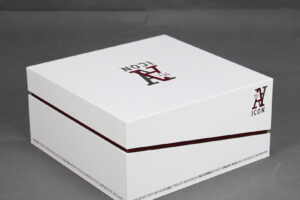Introduction: The Secret Behind Professional-Looking Stitch Work
Every successful sewing project begins with more than just a fabric and a pattern—it starts with the Nahttypen. Whether you’re making clothes, home décor, or accessories, the seams hold everything together. But beyond function, seams also contribute to the overall appearance and comfort of your design.
In this guide, we explore the top sewing seam techniques every sewist should know, how to apply them to different fabrics, and tips to elevate your stitching game.
What Makes Seam Techniques So Important in Sewing?
Seams are more than just joining lines; they determine:
-
Durability: The right seam can make garments last longer, especially in high-stress areas.
-
Comfort: Flat and well-finished seams prevent irritation during wear.
-
Design Appeal: Seams can be styled to enhance the aesthetic of your final piece.
Using appropriate seam techniques ensures your project doesn’t just look good—it performs well too.
10 Seam Techniques for Sewing Like a Pro
🧵 1. Basic Straight Seam
Ideal for most beginner projects, this classic seam joins two fabrics with a single stitch line and is pressed open afterward.
🧵 2. French Seam
Perfect for sheer fabrics like chiffon and organza, this seam conceals raw edges within itself for a clean interior finish.
🧵 3. Flat-Felled Seam
Used in jeans and uniforms, this heavy-duty seam is both strong and tidy—no raw edges in sight.
🧵 4. Bound Seam
Add a polished look by encasing raw edges with bias binding. A top choice for unlined jackets and custom couture.
🧵 5. Lapped Seam
One piece overlaps the other—ideal for leather, denim, or decorative outerwear designs.
🧵 6. Overlocked/Serger Seam
Great for knits and stretch fabrics, this seam trims and binds edges in one step using a serger machine.
🧵 7. Double-Stitched Seam
For reinforced strength, this seam uses two lines of straight stitching. Great for children’s clothes or sportswear.
🧵 8. Topstitched Seam
A decorative option that also strengthens the seam. Common in denim and bags where aesthetics matter.
🧵 9. Zigzag Seam
Flexible and secure, ideal for stretchy fabrics and preventing fraying on raw edges.
🧵 10. Welt Seam
Offers a structured look with hidden seam allowance—great for coats and tailored garments.
How to Match Seam Techniques with Fabric and Function
Here are some key factors to guide your decision:
| Factor | Best Seam Types |
|---|---|
| Lightweight fabrics | French, zigzag, bound |
| Heavy fabrics | Flat-felled, welt, double-stitched |
| Stretch fabrics | Overlocked, zigzag |
| Decorative use | Topstitched, bound |
| High tension areas | Flat-felled, double-stitched |
Pro Tips to Sharpen Your Seam Finishing Skills
-
Always test on scrap fabric before stitching your final pieces.
-
Use matching needle sizes and thread weights for each fabric type.
-
Press seams after sewing—they lie flatter and look neater.
-
Practice with various seam allowances to see what suits your garment best.
Frequently Asked Questions (FAQs)
Q1: Which seam is best for beginner sewing projects?
Start with the basic straight seam—it’s easy, fast, and widely used.
Q2: Can I use overlock stitches without a serger?
Yes, a zigzag stitch on a standard machine can mimic an overlock seam in some cases.
Q3: What’s the best seam for kids’ clothing?
Use double-stitched or overlocked seams for durability and stretch.
Q4: Should I always finish raw edges?
Yes—unprotected raw edges can fray and weaken the seam over time.
Q5: Are decorative seams enough for structural support?
No—combine them with strong base seams for both beauty and function.
Conclusion: Seam Techniques Are Your Sewing Superpower
Understanding and mastering sewing seam techniques can dramatically transform the quality and durability of your creations. By choosing the right seam for the right job, you build not just garments—but confidence in your craftsmanship. As you explore different seam styles, your projects will evolve from homemade to professionally polished.
